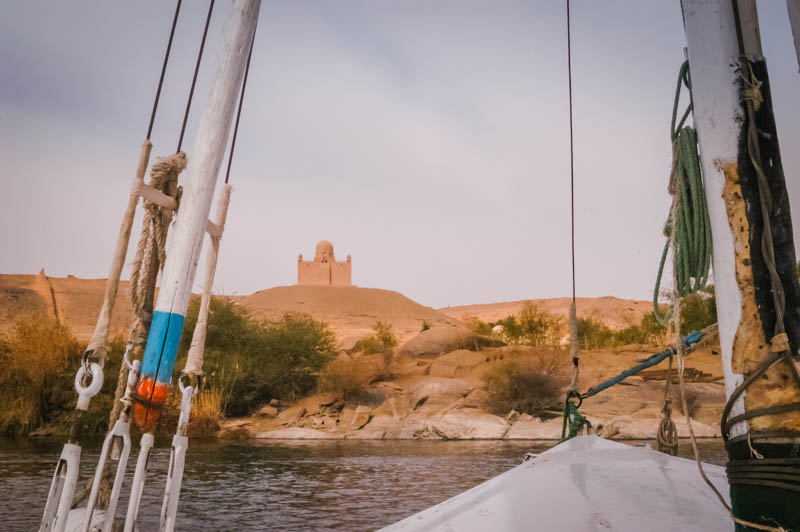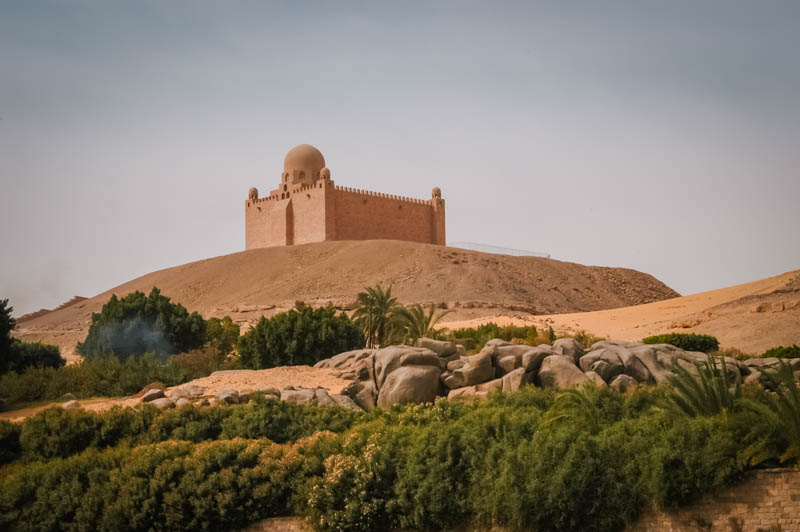
The west bank of the nile near Aswan is mostly a huge embankment. Just uphill and visible from the water is the Mausoleum of Agha Khan – a walled estate on a barren hillside.

It is modeled on a Fatimid temple, and looks like many of the mausoleums in the cemeteries in Cairo. Inside, a open court contains a marble sarcophagus for the Agha Khan III, the 48th Imam of the Isma’ili sect if Shi’ite Muslims. He died in 1957, and the tomb attracted many pilgrims. Agha Khan was well known for his wealth and on his diamond jubilee in 1945 he was given his weight in jewels by his followers. He was succeeded by his grandson, Karim Agha Khan upon his death in 1957
His widow, Omme Habibeh, or The Begum, remained in Aswan, and placed a red rose on the sarcophagus every day — a local story has it that when red roses were unavailable in Egypt, one was flown in a private plane from Paris for six days, to ensure that a fresh flower was there each day. She died in 2000, and a gardener performs that duty every day.
The mausoleum is currently closed to visitors, because of problems with graffiti and pilgrims camping nearby.